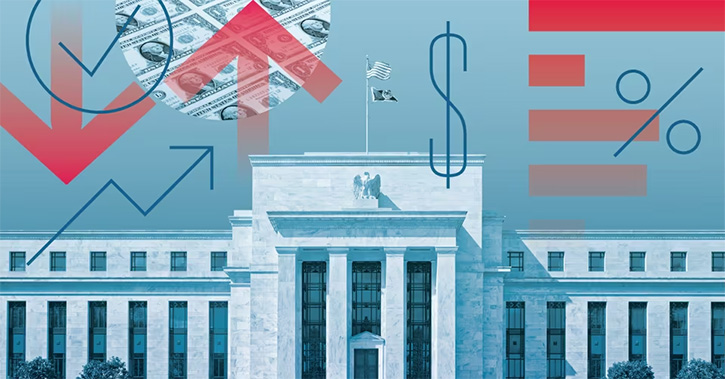With the theatre of ongoing trade negotiations and the suspense of slowing economies, many investors are left wondering how and when to seize opportunities to enter a Chinese market with quadruple the population of consumers.
Trade negotiations between the U.S. and China have improved significantly over the past few months, from a likeness to a cold war as recently as November, to meaningful meetings between officials and gestures of goodwill recently that go beyond a March deadline. World markets are responding very positively, and it may be a sign that it’s worth getting invested before the final handshake occurs.
Regina Chi, Vice-President and Portfolio Manager at AGF Investments is based in Toronto and covers emerging markets, with an overweight allocation to China in her AGF Emerging Markets Fund. She says that avoiding a 25% tax on US$200bn in goods traded is going to have broad benefits for both sides.
Let’s first look at potential opportunities on our side of the pond when the deal is sealed.
It’s worth noting which U.S. sectors picked up following the most recent sign of patience around the deal from President Trump.
Energy, for example, picked up over an easing of fears that domestic production might have to maneuver to meet any supply concerns from a deal gone bad. Trade-sensitive industrial sectors rose, and chipmakers, which depend on China for much of their revenue, also posted solid gains.
“Technology and industrial sectors [in the U.S.] will respond well to a trade truce,” says Chi, adding that the forced transfer of intellectual property and intellectual property theft have been key concerns and are part of the deal.
But China has already been working on banning the forced transfer of technology on their end before this deal - part of a greater theme of China making big moves in the background. China’s domestic policy moves act as a silver lining around its slowing economy, making certain segments of the Sino market worth watching.
The Chinese economy is slowing – don’t focus on that
It’s important to preface investment opportunities in China by noting that the Chinese economy is slowing.
Declining investments in fixed-assets, or tangible assets or property such as plants and equipment, are down likely due to a sensitivity to slowing credit growth, according to a Morningstar Equity Research released last month. The report titled “Is China’s Economy Slowing Down?” by authors Preston Caldwell and team, warns that the real extent of the slowdown, and the effectiveness of respective Chinese policy-level efforts, are obscured by deteriorating data quality. Domestic consumption also rapidly decreased throughout 2018, with demand for consumer durables shrinking and demand for automobiles down the most, the report notes.
But it’s worth focusing on what the government does about it. A highly-centralized government approach to economic management is fast-moving and with Chinese coffers at play, the moves are big. China ramped up investment stimulus to help stabilize fixed-asset investment growth, according to the report.
The Morningstar report also notes that stimulatory policy measures will likely be focused on reversing the downward trend in consumption levels, with some initial positive signals on that end as well.
“I think the recent extension of various tax breaks in support of consumer spending are gaining some traction in China,” notes Chelsey Tam, Equity Analyst at Morningstar.
It’s also worth focusing on ‘Made in China 2025’.
The goals of Made in China 2025 include increasing Chinese-domestic content of materials to 40% by 2020 and 70% by 2025, with a focus on high-tech fields including the pharmaceutical industry, automotive industry, aerospace industry and IT.
By multiplying a massive consumer base with a wide variety of revenue channels in less developed service and technology sectors – the latter which presents a high exciting and unique market segment with opportunities that we’ll cover in a future piece – the potential is clear. However, with the data obscurity, let’s look at some highly visible benefactors of policy moves and consumption stimuli.
Chinese equity opportunities available now
In transportation, China’s high-speed network expansion and industry reforms have the Morningstar report’s authors optimistic about five-star rated Guangshen Railway Co. (XNYS:GSH) and believe the company is positioned to deliver long-term investment value. The authors expect concrete actions to be taken over the next 12-24 months, including a one-off 25% tariff hike on conventional passenger lines, further progress in railway land development and utilization, railway asset securitization, and further deregulation in the sector. The authors expect these developments to boost Guangshen's profitability and returns over the next five years.
Four-star rated ENN Energy (PINX:XNGSY) owns exclusive rights on its city gas operations in China, with contracts that extend for decades. The long-term contracts allow the firm to collect one-off connection fees as well as ongoing gas usage fees. As Chinese gas consumption increases, ENN's volumes and fees follow, providing it with rapid growth. The authors add that ENN Energy is a direct beneficiary of LNG imports, and expect ENN to stand out from its peers, given its ability to source LNG at competitive prices through the LNG receiving terminal in Zhoushan, Zhejiang province, which is owned by its parent company.
Lastly, as a preview into the possibilities from developments in the technology sector, Chi says that artificial intelligence developments in China – part of the China 2025 plan - have taken off, with funding now taking up 48% of the global share compared to the U.S. at 38%.
Experts identify Ping An Insurance (PINX:PNGAY) as a global leader in the application of artificial intelligence technology in the financial sector. Four-star rated Ping An is a top pick in the Morningstar report as it differentiates itself from peers with its technological focus and conglomerate business model, which includes insurance, banking, securities, trust, and other business, such as wealth management and technology.




















